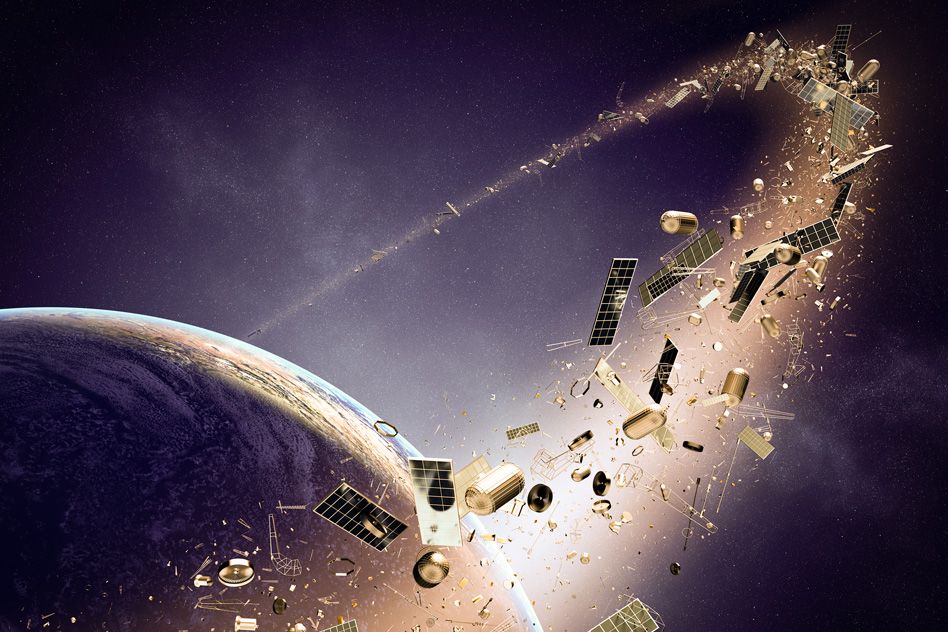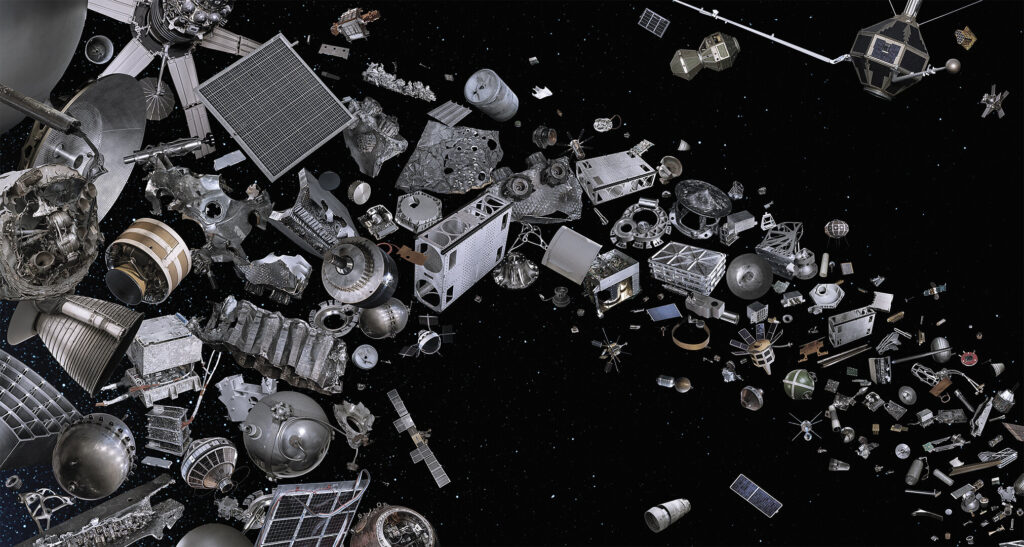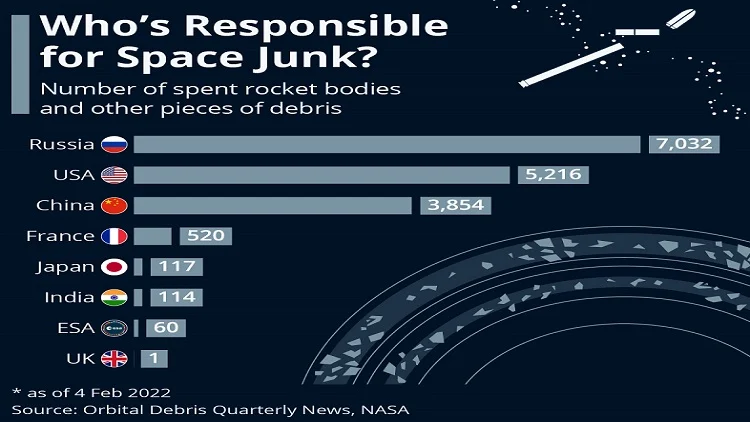
Imagine Earth surrounded by invisible garbage, hurtling around at thousands of kilometers per hour, threatening satellites, astronauts, and entire space missions. That is space debris, a rising problem that is no longer just a scientific concern but a geopolitical, environmental, and economic threat.
Space debris refers to man-made objects in orbit that no longer serve any useful purpose. This includes dead satellites, discarded rocket parts, pieces from satellite collisions, and even fragments as small as paint chips.

The Problem No One Saw Coming
Until the late 20th century, humanity believed the skies above were infinite and empty. But since the boom in exploration and the surge in private satellite launches, the orbital zone has grown dangerously crowded.
In 2009, a defunct Russian satellite collided with an active Iridium one, producing over 2,000 pieces of debris. Since then, such accidents have become more frequent.
Today, more than 36,000 objects larger than 10 centimeters circle Earth. Millions more are too small to track, yet can cause serious damage due to their high speed.
How Does Space Debris Affect Us?
You might ask, “Why worry about junk floating above us?” But these fragments affect critical systems we rely on daily—banking, communication, GPS, weather reports, and even military operations.
Here’s how:
- Risk to Satellites: A collision can knock out services we use every day.
- Threat to Human Life: Astronauts on the ISS regularly take shelter from approaching debris.
- Kessler Syndrome: A chain reaction of collisions that could render low Earth orbit unusable.
- Financial Loss: One destroyed satellite can mean losses in the hundreds of crores.
- Environmental Ethics: Our skies are becoming a cosmic dumping ground, much like our oceans once did.
Who Is Polluting the Space?
The biggest contributors include Russia, the U.S., China, and now, private players like SpaceX. In 2007, China’s anti-satellite missile test created over 3,000 fragments. India’s Mission Shakti in 2019, though successful, added to the clutter too.
As more nations and corporations join the orbital economy, the risk continues to grow.

International Efforts: Still Too Fragmented
Despite the rising alarm, the international legal framework remains weak. The Outer Space Treaty of 1967 prohibits weapons in space but says little about debris management. The Inter-Agency Space Debris Coordination Committee (IADC) offers guidelines, not binding rules.
There’s also the Committee on the Peaceful Uses of Outer Space (COPUOS) under the UN, which promotes cooperation, but again, enforcement is minimal.
As of now, no country can be legally penalized for creating debris, making space law one of the most underdeveloped arms of international policy.
India’s Response and Role
India, through ISRO, has been relatively cautious and responsible. After Mission Shakti, ISRO clarified that the debris would quickly burn up in the atmosphere. More recently, it has adopted safer disposal methods and is working on active cleanup technologies.
IN-SPACe, the new national space promotion agency, signals a move toward smarter mission planning. India is also well-placed to lead calls for a global debris treaty, just as it did with the International Solar Alliance.
The Tech Battle: Can We Clean the Sky?
Solutions are on the horizon, but costly.
-
ESA’s ClearSpace-1: A robotic arm will capture and de-orbit debris.
-
Japan’s Astroscale: Uses magnets and tethers to remove defunct objects.
-
Laser Nudging: Small lasers gently push tiny debris out of orbit.
-
AI Traffic Systems: New software will predict and prevent future collisions.
These innovations are promising, but require cross-border cooperation and funding.
From Space Race to Space Responsibility
The 20th-century race was about reaching the Moon. Today, the real challenge is protecting Earth’s orbit. We must not let our ambitions turn the cosmos into another landfill. Just as we regret polluting rivers and forests, we risk leaving our children a legacy of sky-bound waste. Let’s act before the next blackout, collision, or emergency shelter call on the ISS. The time to protect our orbit is now.
For more such exciting articles stay tuned at The World Times



